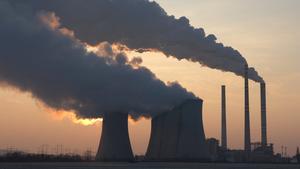Existing power plants and vehicles have already consigned us to unsafe global warming

According to a new study, the power plants and vehicles already in operation are more than enough to warm the planet beyond safe levels.
The Paris Agreement signed in 2015 implored governments around the world to take significant steps to limit global warming, with signees pledging to keep global temperatures from rising 2° C (3.6° F) above pre-industrial levels this century. More ambitiously, the agreement encouraged countries to aim for a maximum of 1.5° C (2.7° F) of warming, which would further reduce the risks of intense storms, flooding, sea level rise, decimated agriculture and other by-products of a warmer planet.
That we are on track to breeze past these limits isn't really news. A UN report published around a year after the agreement was adopted found carbon emissions were set to surpass them easily, projecting a temperature rise of around 3° C (5.4° F) by the end of the century.
The new study, led by researchers at the University of California, Irvine (UCI), sought to shed some light on these trends by taking stock of the fossil fuel-burning infrastructure already in place today, and how much it is likely to contribute to global carbon emissions over the coming decades. This was based on detailed data sets of infrastructure in place in 2018 and the assumption that power plants and boilers will run for around 40 years, and light vehicles for 15 years.
According to the team, business as usual will lead to around 658 gigatons of CO2 being released into the atmosphere over the lifetime of these sources, more than covering the whole carbon budget for 1.5° C of warming and accounting for around two thirds of the carbon budget for 2° C of warming. The researchers were also able to make adjustments to their calculations to determine what shutting down these sources early could mean, finding that the 1.5° C could still be avoided if existing power plants were retired after 25 years instead of 40.
"We need to reach net-zero carbon dioxide emissions by midcentury to achieve stabilization of global temperatures as called for in international agreements such as the Paris accords," says lead author Dan Tong, a UCI postdoctoral scholar in Earth system science. "But that won't happen unless we get rid of the long-lasting power plants, boilers, furnaces and vehicles before the end of their useful life and replace them with non-emitting energy technologies."
The team also looked at power plants that are planned or already under construction, and found these would add another 188 gigatons of C02 to the mix if they go ahead.
"Our results show that there's basically no room for new CO2-emitting infrastructure under the international climate goals," says co-author Steven Davis, a UCI associate professor of Earth system science. "Rather, existing fossil fuel-burning power plants and industrial equipment will need to be retired early unless they can be feasibly retrofitted with carbon capture and storage technologies or their emissions are offset by negative emissions. Without such radical changes, we fear the aspirations of the Paris agreement are already at risk."
The research was published in the journal Nature.
Source: University of California, Irvine
